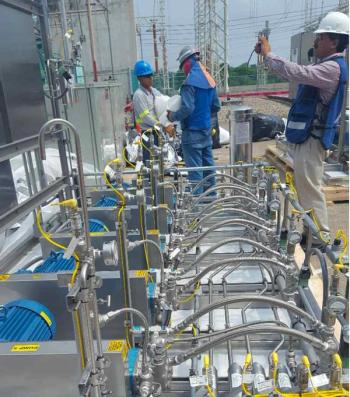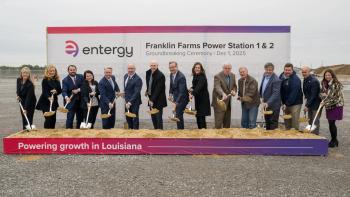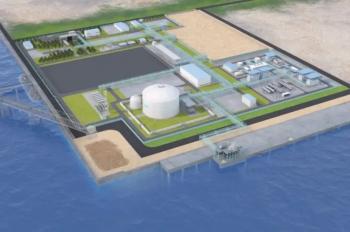
Rotordynamic stability in high-pressure CO2 compressors
The Cidade de Angra dos Reis MV22, a production, storage and offloading (FPSO) vessel owned by Petrobras, is operating in over 2,000 meters of water above the Tupi Field in the Pacific Ocean. It has to process a mixture of natural gas and CO2 in operating pressures that exceed 500 bar.
The process begins with a mixture of CO2 and natural gas that is compressed and delivered to a CO2 membrane. CO2 is separated from the gas stream and compressed to 310 bar. It is cooled and pumped to 550 bar, to be injected back into the ground. Meanwhile, CO2-free natural gas is transported and compressed to 250 bar and either exported onshore or further compressed and re-injected back into the ground at 550 bar for continued oil production.
Petrobras selected a Dresser-Rand CO2 compression train to take the discharge pressure up to 310 bar instead of 250 bar as a means of reducing the number of CO2 pumps and minimizing the footprint. This Datum Integrated Compressor System (ICS) incorporates centrifugal separator technology to permit simultaneous separation of liquids from a gas stream and compression of the dry saturated gas.
A rotating separator is situated in front of the first-stage centrifugal impeller. This multi-stage centrifugal compressor also has impellers arranged in a back-to-back configuration affording the capability of two sections of compression in one casing. These sections can be intercooled or non-intercooled as required by the application.
This two-case compressor train has a low-pressure (LP) compressor to boost the gas from an initial inlet pressure of 2.97 bara (43.1 psia) to a pressure of 35.7 bara, and a high-pressure (HP) compressor to compress the gas to a final discharge pressure of 308.9 bara (4,479 psia). It is driven by a direct-connected, high-speed electric motor with magnetic bearings, all hermetically sealed.
Testing in advance
Before implementation, Petrobras requested a full validation of the compressor, which involved mechanical and aerodynamic testing, as well as rotordynamic modeling and numerical prediction methods. The train received a “full load – full pressure” (FL-FP) inert gas test on a mixture of CO2 and nitrogen, closely approximating the actual aerodynamic cross-coupling force that would be experienced in the field.
The purpose was to evaluate its rotordynamic stability and mechanical integrity. The FL-FP test was conducted to ensure that the MPACC number and volume reduction for each stage were within approximately 2 percent of design condition values. The MPACC number is the modified Wachel number used to quantify the aerodynamic cross-coupled stiffness force as described in API-617. Establishing rotordynamic stability of the Tupi I centrifugal compressors was also critical in order to verify the long-term stable operation of the compressor in the field.
(More in November-December 2012 issue of Turbomachinery International)
Newsletter
Power your knowledge with the latest in turbine technology, engineering advances, and energy solutions—subscribe to Turbomachinery International today.





